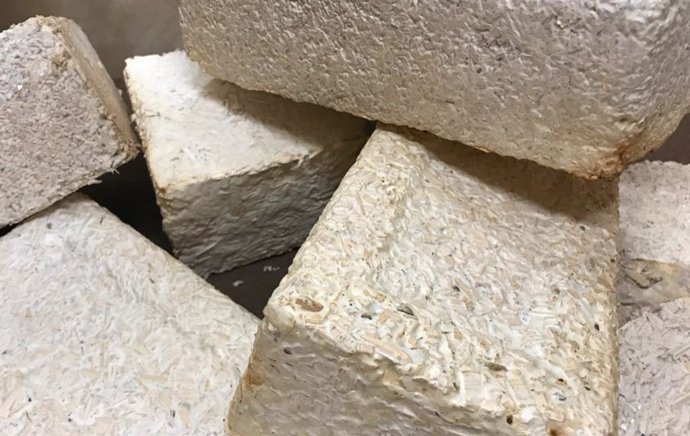Bricks produced from mycelium, garden waste and wood chips as part of the micro-architecture project. Similar materials could be used to build habitats on the Moon or Mars. – NASA
10 Jul. () –
NASA has selected a study of habitats on other worlds from the space agency’s Ames Center that aims to “grow” homes using fungi for future explorers.
The program NIAC (NASA Innovative Advanced Concepts) has committed $2 million over two years to continue technology development for the Mycotecture Off Planet project in preparation for a possible future demonstration mission. The work is led by Lynn Rothschild, a senior research scientist at NASA Ames.
Some habitats, such as landers and rovers, will be deployed on planetary surfaces. However, the Mycotecture project team is developing Technologies that could “grow” habitats on the Moon, Mars and beyond using fungi and the underground filaments that make up the main part of the fungi, known as mycelia.
AVOID POLLUTION
With this development, explorers could travel with a compact habitat built from lightweight material containing dormant fungi. By adding water, the fungi can potentially grow around that structure into a fully functional human habitat, while safely containing them to avoid contaminating the environment.
“We are committed to advancing technologies to transport our astronauts, host our explorers and facilitate valuable research,” he said. it’s a statement Walt Engelund, associate program administrator in the Space Technology Mission Directorate at NASA Headquarters in Washington. “We invest in these technologies throughout their life cycle, recognizing their potential to help us achieve our goals, benefiting industry, our agency and humanity.”
The Mycotecture project could enable a new, multi-use material for construction in space, reducing mass and saving resources for additional mission priorities. Proof of concept for this technology was demonstrated through previous NIAC awards. The team created multiple combinations of fungus-based biocomposites, fabricated prototypes, tested materials in a planetary simulator, evaluated improvements including incorporation of radiation shielding, and drafted detailed designs for mycelium-based lunar habitats. This project also has uses on Earth, in addition to applications on other worlds. Mycelia could be used for water filtration and systems that extract minerals from wastewater.
From human exploration of deep space to advanced propulsion and robotics, NASA aims to change what’s possible by supporting early-stage space technology research that could radically change the future.
“Mycotecture Off Planet exemplifies how advanced concepts can change the way we imagine future exploration missions,” said John Nelson, NIAC program executive. “As NASA embarks on the next era of space exploration, NIAC helps the agency lay the foundation necessary to bring innovative visions to life.”
Work under the grant will allow the research team to optimize the properties of the materials. It will also allow the team to move toward testing in low Earth orbit. Future applications of this project could include integration into commercial space stations or incorporation into missions to the Moon. with the ultimate goal of using it on Mars.

![[Img #74130]](https://thelatestnews.world/wp-content/uploads/2024/10/Richard-Dawkins-The-scientist-who-changed-our-understanding-of-evolution-150x150.jpg)









![[Img #74130]](https://thelatestnews.world/wp-content/uploads/2024/10/Richard-Dawkins-The-scientist-who-changed-our-understanding-of-evolution-300x200.jpg)

Add Comment